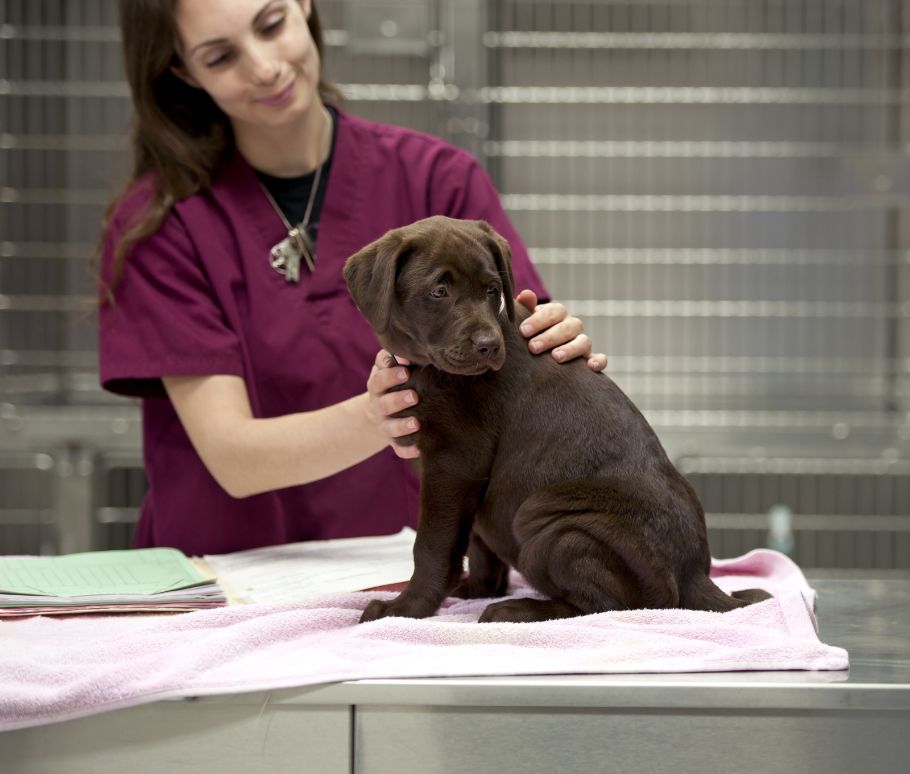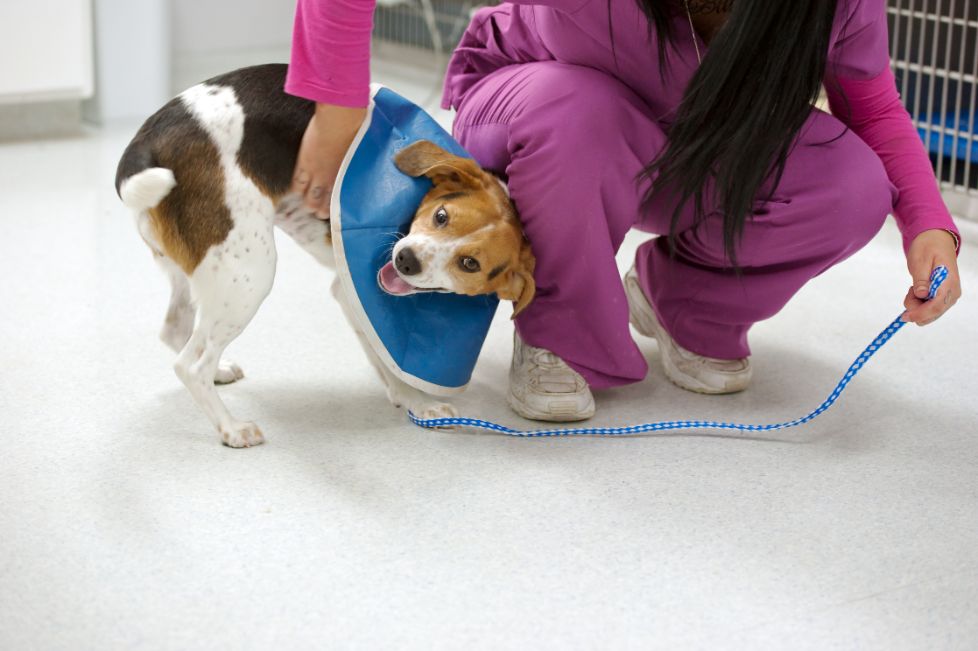Do you love working with animals and want to enter the job market with in-demand skills? Consider becoming a veterinary technician, where you will be able to make a difference in the lives of animals and their owners.

What does a veterinary technician do?
A veterinary technician is involved in all aspects of animal patient care but does not perform surgery, make diagnoses, or prescribe medication. Basically, he or she is the professional who assists the veterinarian. The technician will assist in surgery, exams, and laboratory procedures by handling equipment and supplies, restraining animals, monitoring vitals, and more. He or she will also work directly with pet owners, providing animal care, education, and guidance, all under the supervision of the veterinarian. Further responsibilities might include reception desk duties and customer service.
A veterinary technician can work in many different environments including veterinary hospitals, zoos, animal shelters, wildlife facilities, boarding kennels, humane societies, and even in animal pharmaceutical sales.
If you are wondering what kind of education is required to be a veterinary technician, you will want to obtain an associate degree, at a minimum. Such programs typically take about 18 to 24 months to complete, depending on the course load you are comfortable with. Find a program from an accredited institution, and also one that is approved by the CVTEA. This ensures the program meets the requirements for teaching you job-ready skills approved by an independent licensing board. And do not forget; because you will be working with animals, you will need to be relatively fit, and a bit of dog hair on your scrubs should not bother you too much!
Once you have completed your program, graduates are currently in demand for many roles throughout the U.S., according to the U.S. Bureau of Labor Statistics.
If you are looking for a career where you can be surrounded by furry, feathered, or finned friends, an A.S.T., or associate in specialized technology, in veterinary technology might be for you.
Let’s take a look at the day in the life of a veterinary technician who works in a large animal hospital and see if it is the type of workday you would like to experience. Keep in mind that every day is different, and with animals, you will always be on your toes! For the sake of our example, we will showcase a veterinary hospital that has a receptionist, and the technician described below does not work the front desk. Your actual job duties may vary from this example, depending on the type and size of your employer.
A Typical Work Day in the Life of a Veterinary Technician

Start of Shift
First of all, the veterinary technician clocks in, washes her hands, dons a mask, and changes into scrubs. While not all veterinary practices require staff to wear scrubs, it is common for staff to wear them as part of a uniform.
After proceeding to the reception area, she prepares to greet the owners and the animal patients. This may include a briefing with the veterinary doctor on the day’s cases. Upon opening, she gives the animal patients a friendly pat, and might even distribute treats. She will also speak with owners, prepare new patient charts, update existing charts, and review the day’s schedule.
Helping Animal Patients
Once all the preliminary tasks are complete, the veterinary technician (or vet tech for short) will then prepare the operating and exam rooms by cleaning, disinfecting, and sterilizing equipment, tools, and surfaces. Next, she will transport the animal patients into the exam rooms or operating rooms, depending on the procedure.
Next, the animal patients are prepared, and most importantly, secured. The vet tech will assist the veterinarian with laboratory procedures, x-rays, surgery, and a variety of other tasks. The vet tech might also have the added responsibility of comforting nervous owners while their pets are being treated. Note that vet techs do not perform complicated surgeries. Rather, they assist by providing tools, supplies, and performing basic tasks such as bandaging.
The vet tech will also advise and guide owners about pet care and aftercare, diet, and any other of the animal patient’s needs. In some cases, if she also takes care of billing, she may have to explain insurance and billing procedures. Vet techs may be responsible for coordinating follow-up appointments.
While the vet tech in our example does not perform receptionist duties, she might fill in during breaks and answer the phones and have some general office duties such as faxing documents, stocking supplies, basic cleaning, and so on.
Finally, the vet tech must have the know-how and be willing to respond in unpredictable emergency situations; animals might not always behave the way we want them. The vet tech must act at the drop of a hat when things get chaotic by remaining calm and helpful at all times. Most importantly, the vet tech needs to understand appropriate animal restraint and calming techniques, as well as safety protocols and precautions.

End of the Day
While every day at the veterinary hospital or clinic can be different, the end-of-day duties are more-or-less the same, day in, day out. However, that does not make things boring! When the shift is about to end, the vet tech will gather all of the tools used, and then prepare them for sterilization in the autoclave. Tools are usually placed in special individual envelopes that change color once the autoclave reaches the required sterilization temperature and time required.
Once the autoclave has been loaded, the vet tech restocks personal protective equipment such as gloves, masks, and face shields. Office and clinical supplies are also restocked or re-ordered so that everything is ready for the next day.
Patient owners might be called with appointment reminders, and animal patient charts are updated and put away.
Finally, the vet tech will clean the work areas and ensure that there are plenty of treats for the animals. She will then change back into regular clothes, place scrubs in a laundry basket (or take them home, depending on the establishment’s laundry procedures), and clock out.
Is This the Career For You?
If what you have just read sounds like something you would like to do, then seriously think about enrolling in a veterinary technician program. It is a great career option for animal lovers with a deep sense of empathy and who like a dynamic clinical setting. You have to be organized, be good with pets and other animals, and always be ready for the unexpected. And don’t forget, even though you will be working with animals, you will need strong people skills, too. If this sounds like you, discover your S.P.A.R.K. and contact the Institute of Medical and Business Careers today to learn more about becoming a veterinary technician.
